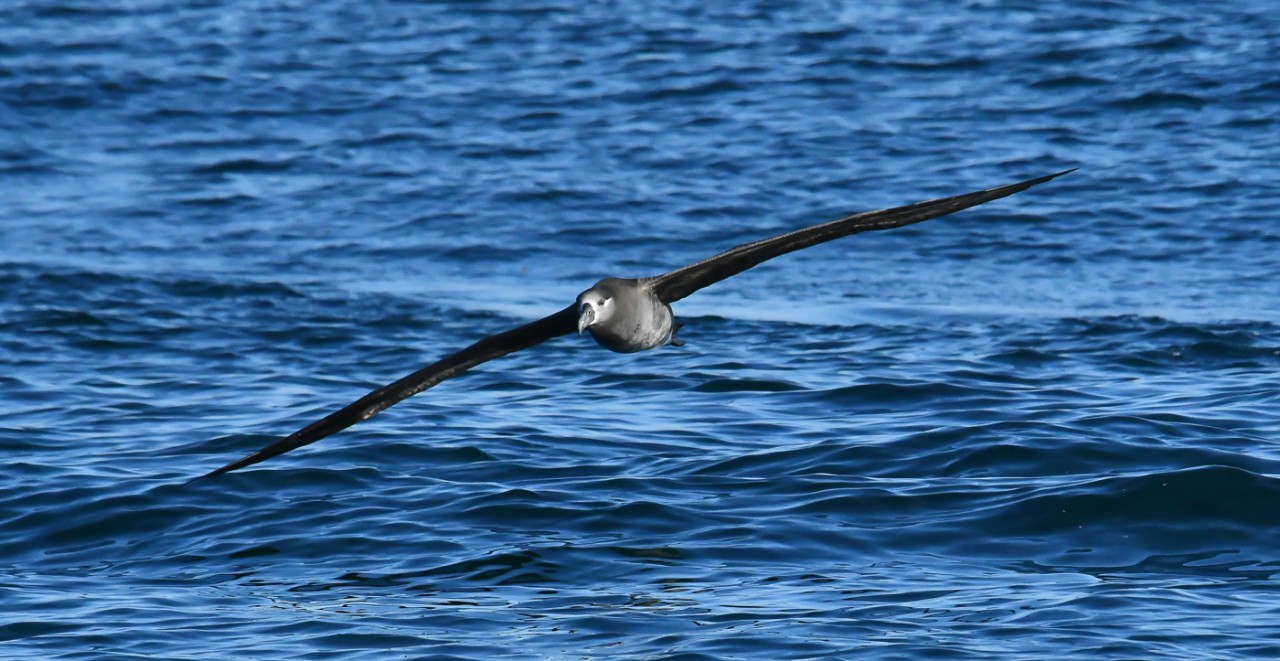
SIAM News: How the albatross optimizes long-range flight
UC aerospace experts explain physics behind effortless flight
How do albatrosses soar for days over the ocean while expending almost no energy?
An aerospace engineering student and his professor at the University of Cincinnati say they harness the wind by executing a series of deft aerial maneuvers that save them energy as they travel the vast ocean.

UC aerospace student Sameer Pokhrel. Photo/Provided
UC College of Engineering and Applied Science graduate student Sameer Pokhrel and Sameh Eisa, an assistant professor of aerospace engineering, broke down the complicated physics behind the bird's graceful flight for SIAM News, the science magazine for the Society for Industrial and Applied Mathematics.
Albatrosses have enormous wings. The wandering albatross has the largest wingspan of any living bird at 12 feet. They use these long wings to get lift on the ocean breeze.
According to Pokhrel and Eisa, albatrosses fly into the wind, gaining elevation through wind shear, or the increase in wind speed typically observed at higher elevations. They trade kinetic energy for potential energy during the climb.
When the bird's air speed slows, they execute a deft high-altitude turn and descend with a tail wind that propels them. During the descent, they trade the gained potential energy with kinetic energy to increase speed and momentum.

UC assistant professor Sameh Eisa. Photo/Provided
At the bottom of their decent, near the ocean's surface, the birds make another graceful turn into the wind to repeat the complex series of maneuvers.
Pokhrel and Eisa say albatrosses minimize the energy they need to expend by optimizing this soaring pattern, which they described as an extremum seeking control system. In Eisa's Modeling, Dynamics and Control Lab, the researchers created a computer model that replicates the optimized soaring patterns that come so naturally to albatrosses.
The researchers said the lessons we learn about dynamic soaring from albatrosses can help optimize long-distance flights with drones and other aircraft.
Pohkrel presented his analysis to the Society for Industrial and Applied Mathematics Conference on the Life Sciences in July.
Featured image at top: A black-footed albatross glides over the Pacific Ocean. Photo/Michael Miller
Related Stories
News Cincinnati loved in 2025
January 2, 2026
The story of prohibition bootlegger George Remus was among WLWT's favorite segments in 2025. UC Law Professor Christopher Bryant spoke with journalist Lindsay Stone about Remus using a temporary insanity defense during a murder trial.
What to know about this year’s big tax changes
January 2, 2026
Local 12 reported that taxpayers can expect some major changes this tax season. Gary Friedhoff, adjunct instructor at the University of Cincinnati’s Carl H. Lindner College of Business, recently spoke to Local 12 about how to avoid surprises.
Study finds police officers face higher long-term health risks
January 2, 2026
J.C. Barnes, a University of Cincinnati professor, is interviewed by Spectrum News about new research showing that the physical and psychological demands of law enforcement can contribute to earlier deaths.
